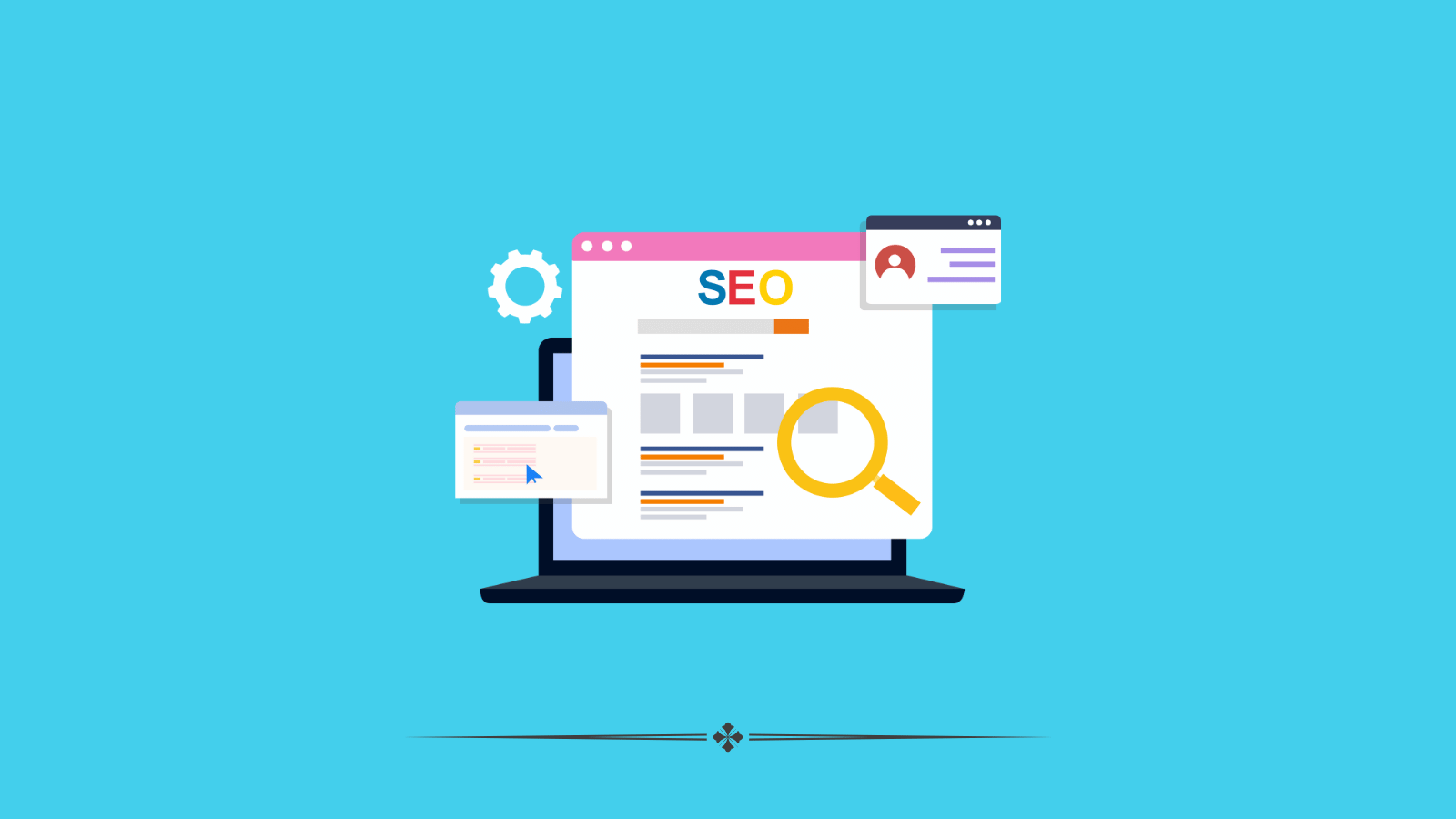A Comprehensive Guide To Updating Your SEO Strategy
Updating your SEO strategy is crucial to achieving and maintaining a higher placement on the results pages. It allows you to adopt the latest SEO trends and gain a competitive edge.

If your SEO rankings aren’t as good as before, your current strategy may be obsolete. Should you update your SEO strategy? Absolutely!
SEO is constantly evolving, so it’s important to revisit and keep your SEO strategies up to date accordingly. SEO isn’t a one-time-big-time type of thing; it’s not something you can set, forget, and let time do all the work that you should be doing.
You must pay constant attention to your SEO strategy to achieve the highest ranking possible. To further improve your results, consider using a data-driven SEO approach. This means using data to inform your decisions about keywords, content, and links. Keep in mind that search engines like Google and Bing update their system regularly, and these updates can either make or break your strategy.
Here are some examples of SEO updates:
- Imposing penalties on sites for producing low-quality content
- Improving semantic search for a better search experience
- Having penalties on sites for using spammy backlinks
- Ranking sites for producing high-quality content
Keep in mind that updating your strategy doesn’t mean creating a new one from scratch. Rather, it means keeping up with new updates to gain an advantage over your competitors. You can also ask SEO experts for digital marketing services that may help improve your SEO strategies.
Why Should You Update Your SEO Strategy?

Below are the reasons why it’s important to revisit and make some tweaks to your SEO strategy from time to time:
1. Google’s Search Algorithm Updates
Did you know that Google, the world’s most popular search engine, releases 500 to 600 updates every year? That’s like updating the system twice a day. Usually, Google’s updates aren’t easily recognizable until something goes wrong, putting your ranking at risk.
If you fail to update your SEO strategy based on Google’s algorithm updates, you’ll be left behind in the competition. Using obsolete tactics won’t get you the highest ranking possible, so make sure to tweak your strategy from time to time to stay relevant.
Start with an SEO audit on your site. Then, confirm the latest SEO trends and changes Google wants you to make. Once everything has been verified, update your strategy and follow the best practices to make the strongest in the competition.
Prepare for Google updates, but don’t act immediately after they’re released. Restructuring your site’s content right after an update release might do more harm than good. Wait for one to two days before carrying out the updates your platform needs.
2. Poor Content Affects The Entire Website
Search engines rank each content one by one. However, they also look at your website as a whole and analyze its performance and usefulness to web users. Blogs and landing pages must be optimized for search engines and readers before publication, because with SEO-optimized content you will increase website’s performance.
Updating your SEO strategy allows you to reoptimize and repurpose your content, even those underperforming ones. This will help you boost not only the rank of your content individually but also your website overall. It’s also important to really focus on niche content when updating your site, so if you’re trying to improve the SEO for security companies for example, you’re going to want to ensure all the content you are writing is helpful and as niche based as you can make it.
3. Competitors Change Strategies
Competition is a crucial factor when it comes to updating SEO strategy. Even after publishing high-performing content, your competitors won’t stop working. They’re likely waiting for fresh updates that could help them reach the top of the competition, and so should you.
To beat your competitors, you must always be one step ahead. You can maintain your competitive edge if you update your SEO strategy from time to time. Use fresh updates to your advantage to get the highest ranking possible in SERPs. However, only apply tweaks that make sense to your content and website, especially for minor updates, which can cause more harm than good.
4. Updates Can Boost Site Rankings

Bringing fresh and high-quality content is essential to achieve better SEO rankings. However, updating existing content to stay ahead of the current updates is faster and easier than writing something from scratch. Also, it can provide the same impact.
Google gives newly-published, high-quality content a ‘freshness factor’ to make it rank higher than outdated ones. This aims to prevent obsolete content from appearing on the search engine results page (SERP).
Tweaking a piece of your previously high-ranking content replenishes its freshness factor. This makes it more visible without exerting too much effort. In addition, it’s difficult to win against a powerful headline. Rebooting your meta descriptions and headlines encourages search engines to revisit your content. Use a maximum of 70 characters per headline to achieve a good balance that grabs the reader’s attention.
Applying such tweaks ensures your content will always be at its best. This way, you won’t need to panic when updates have been released.
How To Update Your SEO Strategy?

Now, you understand the importance of updating your SEO strategy regularly. Perhaps you’re wondering how to do it. If that’s the case, here’s a step-by-step guide to tweaking an underperforming SEO strategy:
1. Choose Pages To Be Revised
It’s always a good idea to take a second look at every piece of content on your website to determine whether it needs revision. However, there are pages you should prioritize over others. These are the following:
- A Previously Well-Performing Page: If you have high-ranking content that has fallen off the charts, it probably needs revision. Other pages might have outranked yours because they’re new or updated.
- A Supposed To Be High-Ranking Page: Do you think some of your content should have ranked higher than others? If you do, find out why they failed to do so. These pages require optimization to rank higher.
- A High-Ranking Page: Yes, you read it right! Even pages that are on top of the SERPs might require some revision. That said, reoptimize these pages as soon as possible before your competitors beat them out of the game.
Follow these simple tips to determine which pages you should update first. Then, apply the updates based on what your audience and search engines want. Only then will you allow these pages to get the highest ranking possible in results pages.
2. Optimize Content Based On Search Intent
First, ask your inner self: How can I effectively change content to satisfy search intent? Google continuously releases updates to ensure that results match the searcher’s intent. To answer that question, you need to understand what search intent is.
Search intent, or user intent, is why users visit search engines and enter their queries on the search bar. Searchers have an objective they want to accomplish when they visit a search engine and do a search.
For example, a user enters ‘quick and easy beef and broccoli recipes’ on the search bar. The first recipe looks okay and informative. However, it takes an hour and a half to finish compared to the second one, which only requires half an hour or less to cook.
Obviously, the user would pick the second one over the first one because it satisfies their search intent, which is to look for a quick and easy beef and broccoli recipe. Search engines would be quick enough to take action and replace the first one with others that match the searcher’s intent.
Here are some best practices for updating content based on search intent:
- Identify Search Intent: There are four types of search intent: informational (e.g., best food blogs), navigational (e.g., Twitter login), commercial (e.g., best DSLR cameras), and transactional (e.g., CA to NYC flights). When updating content, make sure it satisfies the specific search intent assigned to them.
- Improve Content: Sometimes, a page (even those you think are good) can’t rank higher because it fails to match the searcher’s intent. So, improve your content and make sure it answers the questions people often ask. Look at the ‘People also ask’ box to find out what users want to know.
Reoptimize your content based on the search intent to encourage search engines to rank your pages higher than your competitors. These two tips might be able to help you on your journey.
3. Reoptimize Keywords
Keywords are one of the most important elements in SEO. If you’re writing and publishing content without conducting keyword research, now’s the perfect time to do so. This is probably one of the reasons your content isn’t getting enough rank even if it sounds well-written.
First, identify the keywords relevant to your business. List all the important topics related to your business and fill them with keywords. Then, understand how search intent can affect your keyword research.
Afterward, look for terms related to your keywords. At the bottom of the SERP, there’s a ‘search related to’ portion. This will show you searches related to your keywords. For example, if your keywords are cute puppies, you might see ‘cute puppy videos,’ ‘cute puppies for sale,’ etc.
Lastly, use keyword research tools. These tools will help you find the right keywords based on phrase match and exact match keywords you have. nce you’ve identified the right keywords relevant to your business, it’s time to learn how to use them correctly. Especially if you have a physical location, this is one of the important steps to rank higher on Google Maps.
Here are some tips on using keywords:
- Avoid Keyword Stuffing: Years ago, getting a high rank in results pages was easy. All you need to do is stuff your pages with keywords. But that’s no longer the case—search engines have become smarter than ever. Stuffing your content with keywords results in lower rankings with the possibility of receiving penalties from search engines.
- Use Long-Tail Keywords: Long-tail keywords tend to receive less traffic than short ones. However, they often have higher conversion rates. That’s because they’re specific and highly targeted, and most people using them are motivated. Motivated searchers are likely to convert once they find what they’re looking for.
Furthermore, don’t forget to look at your competitor’s use of keywords. If you want the highest rank possible on Google, analyze the keywords your competitors are using. This will give you an edge over the competition.
4. Check Your Links And Anchor Text

When it comes to links and anchor text, there are two things you need to revisit and update: internal links and content to support your content. Internal links are crucial to your SEO strategy. They allow search engines to understand the structure of your website, pass authority, and enable users to navigate across your platform.
Here are some tips you can add to your internal linking strategy:
- Look For Relevant Sites: Never choose a website that has nothing to do with what you offer. For example, if you’re providing plumbing services, look for websites that promote home improvement. If you’re an SEO specialist, choose websites about sales and marketing. This will help people find your page faster.
- Link To Authority Sites: Authority sites are websites with a massive volume of traffic because of the valuable content they provide to their audience. Hence, incorporating your link into any of their content can help boost your visibility, reliability, and credibility, increasing your inbound traffic.
- Use The Right Anchor Text: An SEO-friendly anchor text is short yet impactful (usually five words or less) to clarify what the page is all about. Also, avoid vague anchor text like ‘click here’ because it doesn’t clearly state what it’s all about. And never over-optimize your anchor text by stuffing too many keywords.
5. Make Your Content Mobile-Friendly
Most searches these days happen on mobile devices such as tablets and smartphones. That’s why producing mobile-friendly content is crucial. If you’ve never considered doing this before, then it’s the right time to do so.
Here are some tips for creating mobile-friendly content:
- Make Your Content Easy To Read: Utilize whitespaces, write shorter paragraphs, maximize bullets and lists, use subheadings, and apply stylings to chunk your content and make it mobile-friendly.
- Write Shorter Titles: Mobile users favor shorter titles because they’re easy to read and can be viewed entirely on results pages compared to long ones. Consider having a maximum of six words when writing headlines for better results.
- Use Small Words: Many writers use long words instead of shorter opposites to impress readers. However, it’s the other way around. Readers prefer shorter and easier-to-read words over bulky ones because they allow them to read faster.
How can I monitor the effectiveness of my SEO strategy

Monitoring the effectiveness of your SEO strategy is crucial to understand how well your website is performing in search engine rankings and to identify areas for improvement. Here are key steps and tools you can use to track the effectiveness of your SEO efforts:
- Set Clear Objectives: Before monitoring progress, define what success looks like. Are you focusing on increasing organic traffic, improving search rankings for specific keywords, enhancing user engagement, or generating more leads/sales? Clear objectives will guide your monitoring efforts.
- Use Analytics Tools: Tools like Google Analytics are essential for tracking website traffic and user behavior. They can help you see how much traffic comes from organic search, how users interact with your site, and what the conversion rates are for your SEO-driven traffic.
- Track Keyword Rankings: Use tools like Ahrefs, SEMrush, or Moz to monitor the rankings of your target keywords. Changes in rankings can indicate how effective your SEO strategies are and whether adjustments are necessary.
- Check Page Performance: Google’s PageSpeed Insights can help you understand how quickly your pages load. Page speed is a ranking factor, so maintaining fast loading times is important for SEO.
- Review Backlinks: Tools like Ahrefs and SEMrush can also track the number and quality of backlinks to your site. More high-quality backlinks generally correlate with higher search rankings.
- Monitor On-Page SEO: Regularly check your site’s on-page SEO including meta tags, alt tags, headings, and content optimization. Tools like Screaming Frog SEO Spider can crawl your website to find SEO weaknesses.
- Assess Content Quality: Analyze the performance of specific content pieces to see which topics or types of content are driving the most traffic, engagement, and conversions. High-performing content can provide insights into what your audience finds valuable.
- Evaluate Mobile Usability: With Google’s mobile-first indexing, your site must be mobile-friendly. Google Search Console can provide reports on mobile usability, highlighting issues that might affect your site’s performance on mobile devices.
- Track SERP Features: SEO tools can show you if your site appears in special search engine results page (SERP) features like local packs, featured snippets, or knowledge panels. Being present in these features can dramatically increase visibility.
- Utilize Google Search Console: Google Search Console offers a wealth of information including search queries that bring users to your site, the number of clicks and impressions, crawl errors, and more. Regularly review this data to understand how Google views your site.
- Measure Conversion Rates: Ultimately, effective SEO should lead to tangible results. Track how many conversions (e.g., sales, sign-ups, contacts) are being generated from your organic traffic and whether these are increasing over time.
- Regular Reporting and Adjustment: Create regular reports (monthly or quarterly) to track these metrics and more. Use these reports to adjust your SEO strategy, experiment with new tactics, and continuously improve your approach.
By systematically tracking and analyzing these aspects, you can gain a deep understanding of your SEO strategy’s performance and make informed decisions to enhance your website’s search engine rankings and user engagement.
Final Words
Updating your SEO strategy is crucial to achieving and maintaining a higher placement on the results pages. It allows you to adopt the latest SEO trends and gain a competitive edge.
When you update your SEO strategy, focus on the following: the pages to be revised, search intent, keyword optimization, internal links, and mobile-friendly content. These areas are among the most important factors search engines consider when ranking websites and pages, so make sure never to ignore them.
FAQ
What is the importance of an SEO strategy?
An SEO strategy is crucial for improving your website’s visibility on search engines, increasing organic traffic, and ultimately driving more qualified leads or sales.
How do I begin developing an SEO strategy?
Start by conducting keyword research to identify target keywords and phrases that are relevant to your business. This forms the foundation of your SEO strategy.
What is on-page SEO, and why is it essential?
On-page SEO involves optimizing your website’s content, including titles, headings, meta tags, and keyword placement, to make it more search engine-friendly and user-friendly.
What role does off-page SEO play in a strategy?
Off-page SEO focuses on building quality backlinks, enhancing your website’s authority, and improving its reputation through techniques like link building and content promotion.
How does technical SEO contribute to a successful strategy?
Technical SEO involves optimizing your website’s structure, speed, and overall performance to ensure search engines can crawl and index your site effectively.
Is mobile optimization part of an SEO strategy?
Yes, mobile optimization is essential as it ensures your website is user-friendly on mobile devices, which is a ranking factor for search engines.
What is the role of content marketing in SEO?
Content marketing helps you create valuable, relevant content that not only engages your audience but also attracts organic traffic and earns backlinks, a key component of SEO.
How can I monitor the effectiveness of my SEO strategy?
Use tools like Google Analytics and Google Search Console to track keyword rankings, organic traffic, and user engagement to evaluate your SEO strategy’s performance.
Are there any black-hat SEO techniques I should avoid?
Yes, avoid black-hat techniques like keyword stuffing, link schemes, and cloaking, as they can lead to penalties and harm your SEO efforts in the long run.
Is it necessary to update my SEO strategy over time?
Yes, regularly updating your SEO strategy is vital to adapt to changing search engine algorithms, trends, and the evolving needs of your target audience.
Create more and better content
Check out the following resources and Grow!